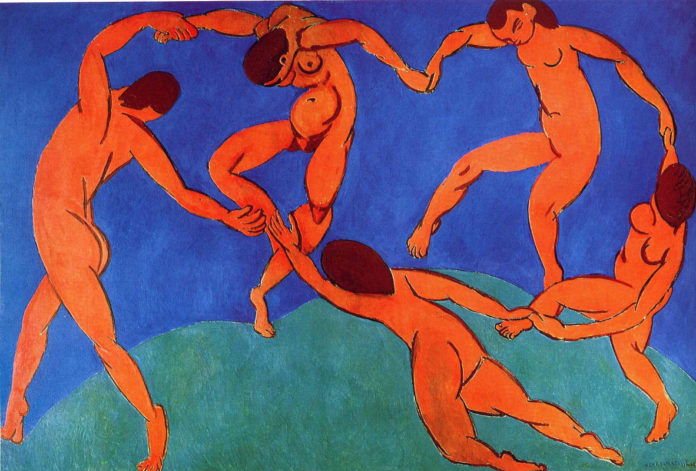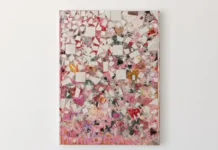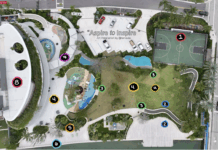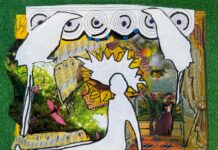Henri Matisse (1869–1954)
Magdalena Dabrowski
Department of Modern and Contemporary Art, The Metropolitan Museum of Art
The remarkable career of Henri Matisse, one of the most influential artists of the twentieth century, whose stylistic innovations (along with those of Pablo Picasso) fundamentally altered the course of modern art and affected the art of several generations of younger painters, spanned almost six and a half decades. His vast oeuvre encompassed painting, drawing, sculpture, graphic arts (as diverse as etchings, linocuts, lithographs, and aquatints), paper cutouts, and book illustration. His varied subjects comprised landscape, still life, portraiture, domestic and studio interiors, and particularly focused on the female figure.
Initially trained as a lawyer, Matisse developed an interest in art only at age twenty-one. In 1891, he moved to Paris to study art and followed the traditional nineteenth-century academic path, first at the Académie Julian (winter 1891–92, under the conservative William-Adolphe Bouguereau), and then at the École des Beaux-Arts (1892, under the Symbolist painter Gustave Moreau). Matisse’s early work, which he began exhibiting in 1895, was informed by the dry academic manner, particularly evident in his drawing. Discovering manifold artistic movements that coexisted or succeeded one another on the dynamic Parisian artistic scene, such as Neoclassicism, Realism, Impressionism, and Neo-Impressionism, he began to experiment with a diversity of styles, employing new kinds of brushwork, light, and composition to create his own pictorial language.
In its palette and technique, Matisse’s early work showed the influence of an older generation of his compatriots: Édouard Manet (1832–1883) and Paul Cézanne (1839–1906). In the summer of 1904, while visiting his artist friend Paul Signac at Saint-Tropez, a small fishing village in Provence, Matisse discovered the bright light of southern France, which contributed to a change to a much brighter palette. He also was exposed, through Signac and Henri-Edmond Cross, living in nearby Lavandou, to a pointillist technique of small color dots (points) in complementary colors, perfected in the 1880s by Georges Seurat (1859–1891). As a result, Matisse produced his Neo-Impressionist masterpiece Luxe, calme et volupté (1904; Centre Georges Pompidou, Paris), so titled after a poem by Charles Baudelaire, and exhibited at the Salon des Indépendants in Paris (spring 1905) to great acclaim. The next summer, in Collioure, a seaport also on the Mediterranean coast, where he vacationed in the company of André Derain (1880–1954), Matisse created brilliantly colored canvases structured by color applied in a variety of brushwork, ranging from thick impasto to flat areas of pure pigment, sometimes accompanied by a sinuous, arabesque-like line. Paintings such as Woman with a Hat (San Francisco Museum of Modern Art), when exhibited at the 1905 Salon d’Automne in Paris, gave rise to the the first of the avant-garde movements (fall 1905–7), named “Fauvism” (from the French word fauve or “wild beast”) by a contemporary art critic, referring to its use of arbitrary combinations of bright colors and energetic brushwork to structure the composition. During his brief Fauvist period, Matisse produced a significant number of remarkable canvases, such as the portrait of Madame Matisse, called The Green Line (1905; Statens Museum for Kunst, Copenhagen); Bonheur de vivre (1905–6; Barnes Collection, Merion, Pa.); Marguerite Reading (ca. 1906; Museum of Modern Art, New York); two versions of the Young Sailor (1906), the second of which is in the Metropolitan Museum (1999.363.41); Blue Nude: Memory of Biskra (1907; Baltimore Museum of Art); and two versions of Le Luxe (1907), among others.
Subsequently, Matisse’s career can be divided into several periods that changed stylistically, but his underlying aim always remained the same: to discover the “essential character of things” and to produce an art of “balance, purity, and serenity,” as he himself put it in his “Notes of a Painter” in 1908. The years 1908–13 were focused on art and decoration, producing several large canvases such as Reclining Odalisque (1908; 1999.363.44); two important mural-size commissions, Dance and Music (1909–10), for the Moscow house of his Russian patron Sergei I. Shchukin; a trio of large studio interiors, exemplified by The Red Studio (1911; MoMA, New York); and a group of spectacularly colored Moroccan pictures. These were followed by four years (1913–17) of experimentation and discourse with the Cubism of Pablo Picasso and Juan Gris. The resulting compositions were much more austere, almost geometrically structured and at times close to abstraction, as shown in the View of Notre-Dame (1914; MoMA, New York), The Yellow Curtain (1915; private collection), The Piano Lesson (1916; MoMA, New York), Bathers by a River (1916; Art Institute, Chicago), and a group of portraits in which a seated figure or the sitter’s head is positioned against a thinly brushed, neutral background. Yet he also created meticulously drawn portraits such as the famous Plumed Hat (1919; MoMA, New York).
In the autumn of 1917, Matisse traveled to Nice in the south of France, and eventually settled there for the rest of his life. The years 1917–30 are known as his early Nice period, when his principal subject remained the female figure or an odalisque dressed in oriental costume or in various stages of undress, depicted as standing, seated, or reclining in a luxurious, exotic interior of Matisse’s own creation. These paintings are suffused with southern light, bright colors, and a profusion of decorative patterns. They emanate a hothouse atmosphere suggestive of a harem.
In 1929, Matisse temporarily stopped painting easel pictures. He then traveled to America to sit on the jury of the 29th Carnegie International and, in 1930, spent some time in Tahiti and New York as well as Baltimore, Maryland and Merion, Pennsylvania. Dr. Albert Barnes, an important collector of modern art and owner of the largest Matisse holdings in America, commissioned the artist to paint a large mural for the two-story picture gallery of his mansion in Merion. Matisse chose the subject of the dance, a theme that had preoccupied him since his early Fauve masterpiece Bonheur de vivre. The mural (in two versions due to an error in dimensions) was installed in May 1933, and remains in place at the Barnes Foundation (Merion, Pa.). The composition highlighted the simplicity of female figures in exuberant motion against an abstract, almost geometric background. In preparation for the mural, Matisse began using a new technique—that of building up the composition from cutout shapes of previously colored paper. From 1940 onward, the paper cutouts became Matisse’s favored exploratory medium and, until the end of his life, the dominant medium of expression.
Another medium that Matisse explored and experimented with throughout his lifetime was drawing. As the most direct expression of the artist’s thoughts, drawing often helped Matisse to work out compositional and stylistic problems or new ideas. During the mid-1930s, he created distinctive series of pen-and-ink drawings on the subject of the artist and his model, while in the early 1940s he conceived his famous sequences of Thèmes et Variations, sensitively drawn spare works in elegant, unshaded line, describing simplified forms of female figures or still lifes. In the late 1940s and early ’50s, his drawings become bolder, the contour line thicker, the forms even more simplified and devoid of detail. The latest large drawings of acrobats (1951–52), executed with a thick brush placed at the end of a long stick, are made up of contour only. They are contemporaneous with a cutout series of Blue Nudes (2002.456.58), and the two mediums seem to represent two different approaches to form and space. The relationship between figure-ground becomes ambiguous and space complements the intended form. The form appears almost sculptural.
Sculpture was another medium pursued by Matisse since his early years, and although independent in expression, it was frequently used to find a solution to pictorial problems or became an inspiration to painting. More than half of Matisse’s sculptures were completed between 1900 and 1910; he also frequently worked in series, manipulating the form and simplifying it over the years. Among his best-known works belong the series of four Back reliefs (1903–31), the series of five Jeannette heads (1910–16), and the Large Seated Nude (1925–29).
Matisse’s creativity extended into the area of graphic arts and book illustration, the latter begun when he was already in his sixties, with the illustrations to Stéphane Mallarmé’s Poésies (1932), and culminated with the cutout compositions (1943–44) for his book Jazz (published in 1947). But the crowning achievement of Matisse’s career was the commission for the Chapel of the Rosary in Vence (1948–51), for which he created all the wall decorations, Stations of the Cross, furniture, stained-glass windows, even the vestments and altarcloths. The beauty and simplicity of this project constituted Matisse’s spiritual Gesamtkunstwerk and attested to his creative genius.
Citation
Dabrowski, Magdalena. “Henri Matisse (1869–1954).” In Heilbrunn Timeline of Art History. New York: The Metropolitan Museum of Art, 2000–. http://www.metmuseum.org/toah/hd/mati/hd_mati.htm (October 2004)







